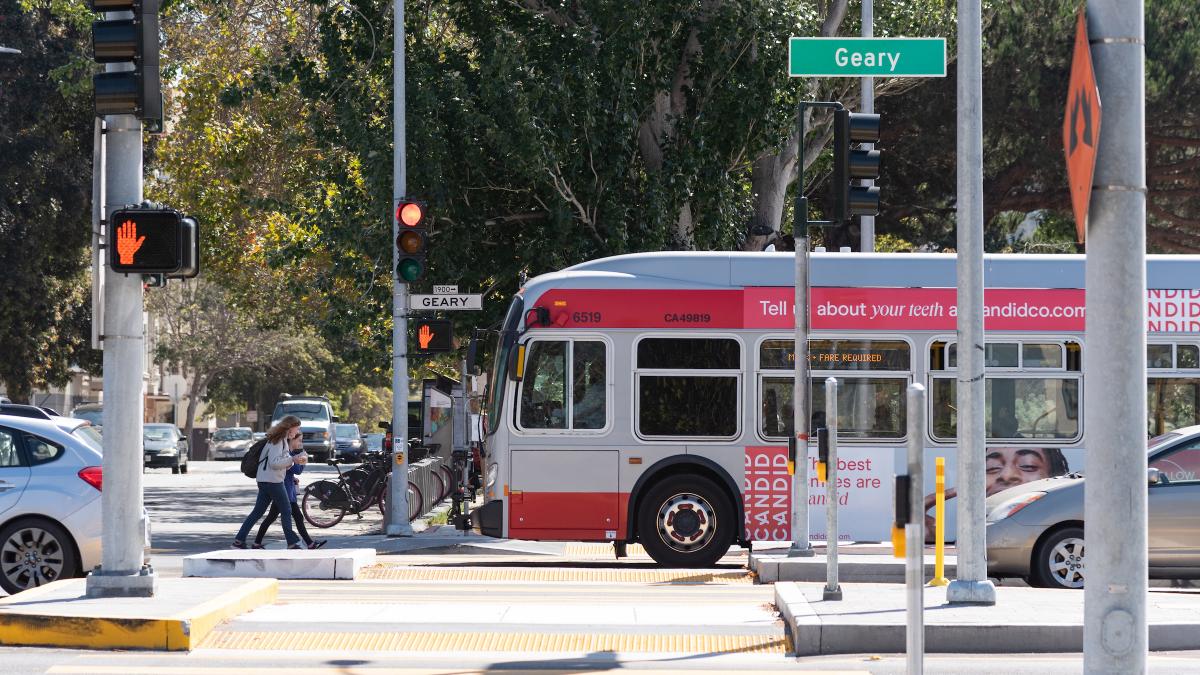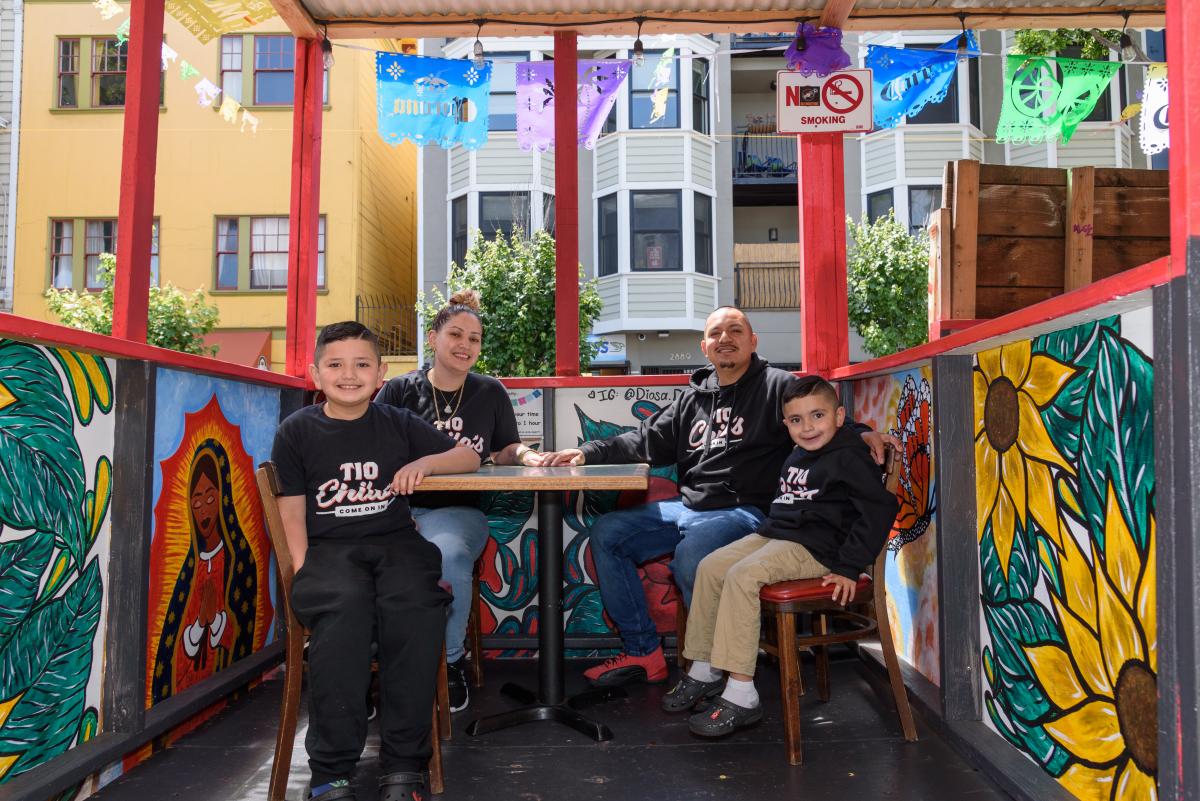Growing India News, world news, nation news, our news, people's news, grow news, entertainment, fashion, movies, tech, automobile and many more..
Friday, December 9, 2022
Show HN: A Movie Script Created by ChatGPT and Stable Diffusion https://ift.tt/f3sCpON
Riders are Feeling the Difference on Geary
By

The results are in: the Geary Rapid Project has delivered a faster, more reliable bus trip and a safer street, according to the SFMTA’s recently published evaluation report for the project.
A faster, more reliable bus ride
One out of every ten passengers stepping onto a Muni vehicle will ride on Geary Blvd., which makes reducing travel time on the corridor a key piece of improving transit in the city. The transit lanes installed as part of the Geary Rapid Project protect buses from traffic congestion, while smarter traffic signals allow buses to get green lights more often. Similar transit upgrades have been made across the city as part of the Muni Forward program, making your next San Francisco destination closer than ever.
Transit travel time improved after the quick-build phase of the Geary Rapid Project in late 2018 and early 2019, and again after the full project was completed in 2021 — with savings as great as 18%. Westbound travel times generally improved the most — up to 3.6 minutes during the PM peak — providing a daily 38R Geary Rapid rider 18 hours of savings per year. Although the biggest time savings were seen during commute hours, with 36,000 riders traveling on Geary around the clock each day, even smaller gains outside of peak hours adds up to major travel time savings for all Geary riders combined. Travel time reliability also improved up to 37%, which means that the time spent waiting for the next bus is more consistent.
A safer street
Reducing Muni-involved collisions is critical to protect our passengers and operators. It also keeps Muni service running smoothly; even non-injury collisions cause buses to be taken out of service. Adding dedicated transit lanes on Geary Boulevard has substantially reduced the rate of Muni-involved collisions on the corridor. The collision rate of 38/38R buses decreased by two-thirds and is now about half that of the current citywide Muni bus collision rate. Several years of data will be necessary to fully evaluate the project’s impacts on reducing traffic collisions in general. But one promising indicator is that there was a 70-80% reduction in vehicles traveling over 40 mph (more than 5 mph over the speed limit). A suite of improvements to calm the “expressway” section of the corridor, including a reduction in general-purpose travel lanes to two per direction, new crosswalks, narrower travel lanes and bulb-outs (sidewalk extensions) were implemented to encourage people driving to slow down.

Comparison graph of 40 mph travel speeds before and after the Geary Rapid Project.
Keeping transit lanes clear
One of the final portions of the project was painting the transit lanes red. This “red carpet” treatment makes it easier for drivers to know where they’re allowed to drive. When we make transit lanes extra clear with red paint, drivers are less likely to get a citation for unintentionally driving in a transit lane. Previous SFMTA studies showed that the number of private vehicles illegally using transit lanes declines about 50% when the lanes are painted red. Sure enough, the number of vehicles entering the lanes on Geary dropped by 47% from 2019 to 2022, even as traffic congestion returned after COVID restrictions eased (vehicles driving legally in the transit lane to turn right or access curbside parking or driveways were not included).
The full evaluation report is available on the SFMTA website and covers several additional metrics, including street space allocation, Muni customer experience and parking availability.
The success of the Geary Rapid Project has informed the final design for the second phase of upgrades, the Geary Boulevard Improvement Project, which proposes to expand these improvements west into the Richmond District.
A photo is worth a thousand words to show the improvements made on Geary Boulevard. These birds-eye shots provide representative examples of the street design on Geary before (August 2018) and after implementation (February 2022) of the Geary Rapid Project.
Published December 09, 2022 at 03:32AM
https://ift.tt/2QHDob7
Show HN: Double-X-Encoding – Encode any UTF-8 string with [0-9a-zA-Z_] https://ift.tt/x47wQOJ
Show HN: This VC Does Not Exist https://ift.tt/XAq3GVZ
Shared Spaces are Here to Stay. Permit Renewals are Due January 15, 2023.
By Anne Yalon

Shared Spaces, amongst many other benefits, allows our residents and families to enjoy safe and social outdoor dining. Seen here are the the owners of Tio Chilo’s Grill and their children in the restaurant’s parklet on 24th Street in the Mission.
San Francisco’s popular Shared Spaces program allows merchants, restaurants and arts and culture organizations to use the curbside, sidewalk and other public spaces to conduct local business activities and stay afloat. What emerged as an economic lifeline during the pandemic is making San Francisco’s streets more energized, engaged and activated.
Many of the Shared Spaces parklets have become central gathering places for the local community. “Our parklet makes me feel like when I go to Mexico, where outdoor seating is everywhere. People end up joining their friends in our parklet. It is a space for our customers and our community," said Liz Vazquez, owner of Tio Chilos Grill. Ray Bair, owner of Cheese Plus, said, "My Shared Space has been a community gathering space. It's an ideal location because we are on a corner. I go out to it every afternoon and see so many people from the neighborhood sitting and enjoying the space. It's so satisfying to see people using the space for what the Shared Spaces program was intended for."
Now, Shared Spaces is transitioning from an emergency initiative to a permanent program. In July 2021, the San Francisco Board of Supervisors unanimously passed legislation introduced by Mayor London Breed to make the Shared Spaces Program permanent. Permits from the pandemic-era Shared Spaces Program were extended to June 30, 2022 and then later to March 31, 2023. Parklet owners have until January 15, 2023 to renew their permits which, once approved, will go into effect on April 1, 2023.
The extension has allowed additional time for small businesses to make any necessary modifications to their shared spaces as they transition into a longer-term permit. Because many of the Shared Spaces were built very quickly, some of them need to be modified to meet the most up-to-date guidelines for safety and accessibility.
So far, 450 permit applications have been submitted for the long-term Shared Spaces program. San Francisco operators who want to keep their existing outdoor Shared Space beyond March 2023 need to renew their permits by January15, 2023. Permit holders wishing to end their existing Shared Space also need to notify Shared Spaces.
Parklet owners who are still deciding if a Shared Spaces permit will work for their business or need to modify their Shared Space to fit the city’s design guidelines can watch the 2-minute design guidelines videos. These videos explain how to make Shared Space safe and accessible for all. They focus on intersection safety and visibility, and emergency access for the fire department. Another video about disability access is in the works.
More information for parklet owners is available at these upcoming events:
Application and site plan workshop
When: Tuesday, Dec. 13, 2 p.m.-3:30 p.m
Where: The Crossing, 200 Folsom St. San Francisco. Register here.
Who: Current parklet operators wishing to apply for a permit.
This interactive, in-person training will ensure that parklet operators and professionals designing and building parklets understand how to create a site plan and an application. Have a question? Bring your application and site plan with you and have our team of experts review it and provide feedback. Please RSVP and submit your questions in advance here. The training will be 1 hour and 30 minutes in length, including a 45-minute Q & A.
Parklet Design Training
When: Thursday, Dec. 15, 9:30 a.m-11 a.m.
Where: 49 South Van Ness, Room 136.egister here
Who: Designers, builders and contractors of parklets.
This interactive, in-person training will ensure that professionals designing and building parklets understand design requirements and best practices for safety and accessibility at Shared Spaces parklets. Attendees will receive a certificate of attendance and will be listed on the program website as having attended the City’s training. Please RSVP and submit your questions in advance here. The training will be 1 hour and 30 minutes in length, including a 30-minute Q & A.
Roadway Closure application and site plan workshop
When: January (check the Shared Spaces website for updates)
More information is available on the Shared Spaces website. To see photos of parklets and featured parklet owners, check out Shared Spaces on Instagram and Twitter.
The SFMTA is proud to help operate the program in partnership with the Mayor’s Office, Department of Planning, Department of Public Works, Digital Services, Entertainment Commission, Office of Economic and Workforce Development, Mayor’s Office on Disability, 311, Department of Technology, Public Utilities Commission and Fire Department.
Published December 09, 2022 at 01:36AM
https://ift.tt/bjO4w1h
Show HN: Wasp – DSL/framework for building full-stack web apps – now in beta https://ift.tt/ItOHoF2
Show HN: Web search using a ChatGPT-like model that can cite its sources https://ift.tt/N6dDFS9
Show HN: Rewriting Scratch 3.0 from scratch in Lua (browser-free native runtime) https://ift.tt/oIlJuUs
Show HN: Rewriting Scratch 3.0 from scratch in Lua (browser-free native runtime) Built a native Scratch 3.0 runtime in Lua that runs .sb3 pr...
-
Show HN: An AI logo generator that can also generate SVG logos Hey everyone, I've spent the past 2 weeks building an AI logo generator, ...
-
Breaking #FoxNews Alert : Number of dead rises after devastating tornadoes, Kentucky governor announces — R Karthickeyan (@RKarthickeyan1)...
-
Show HN: Snap Scope – Visualize Lens Focal Length Distribution from EXIF Data https://ift.tt/yrqHZtDShow HN: Snap Scope – Visualize Lens Focal Length Distribution from EXIF Data Hey HN, I built this tool because I wanted to understand which...